Gurudwaras are important places of worship for Sikhs, and Delhi has many famous Gurudwaras that are visited by devotees from all over the world. These Gurudwaras not only serve as places of worship but also play an important role in providing food, shelter, and other basic necessities to the needy.
Some of the famous Gurudwaras in Delhi include Gurudwara Bangla Sahib, Gurudwara Sis Ganj Sahib, Gurudwara Rakab Ganj Sahib, Gurudwara Nanak Piao Sahib, and Gurudwara Majnu Ka Tilla. These Gurudwaras have a rich history and are known for their beautiful architecture, holy ponds, and peaceful surroundings. The main prayer halls of these Gurudwaras are adorned with beautiful frescoes and intricate carvings that depict the history of Sikhism. The holy ponds or “Sarovars” are places where devotees take a dip to purify their souls. The Gurudwaras also provide langar, a free community kitchen, where anyone can come and have a meal irrespective of their caste, creed, or religion. Visiting these Gurudwaras is a unique experience that provides an insight into the rich culture and traditions of Sikhism. It is also an opportunity to witness the selfless service and devotion of the Sikh community towards humanity.
There are many Gurudwaras (Sikh temples) in Delhi, India. Some of the famous ones are:
1- Gurudwara Bangla Sahib
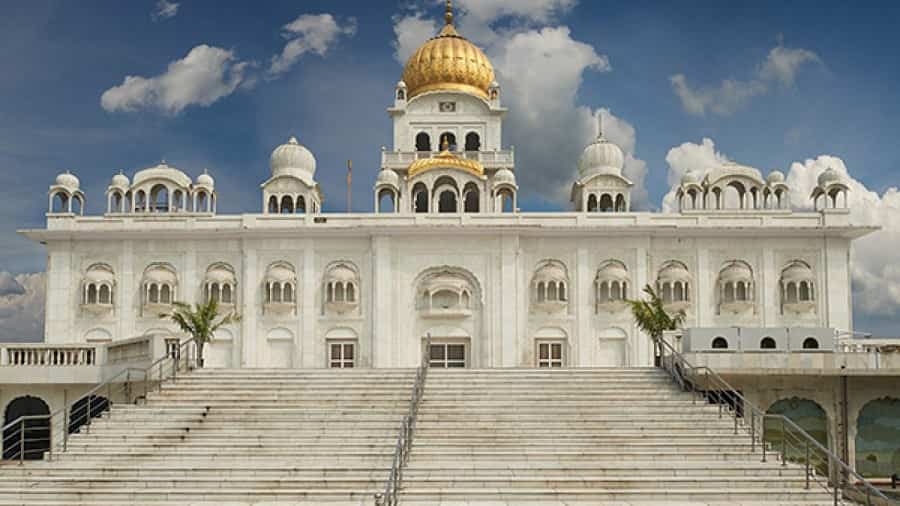
Gurudwara Bangla Sahib is a prominent Sikh Gurdwara (place of worship) located in Connaught Place. It is one of the most prominent Sikh Gurdwaras in the country and is visited by thousands of people every day, both Sikhs and non-Sikhs.
The Gurdwara was originally a bungalow (Bangla) belonging to Raja Jai Singh, a Mughal nobleman, in the 17th century. It was later converted into a Gurdwara after the eighth Sikh Guru, Guru Har Krishan Sahib, visited and stayed at the bungalow during his Delhi visit in 1664. The Gurdwara complex now includes a main prayer hall, a sarovar (holy pond), a langar hall (community kitchen), a school, and a hospital. One of the most distinctive features of the Gurdwara is the golden dome that adorns the main prayer hall. The dome was added in the early 20th century and is a major landmark of the city. The Gurdwara also houses a museum that showcases the history and teachings of Sikhism.
2- Gurudwara Sis Ganj Sahib
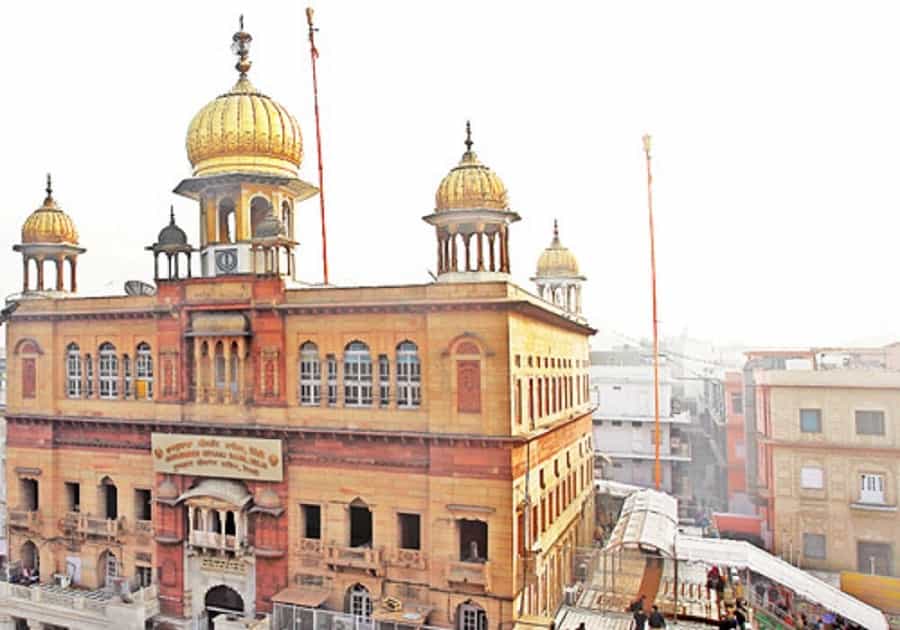
Gurudwara Sis Ganj Sahib is a prominent Sikh shrine located in the Chandni Chowk area of Old Delhi, India. It is a historically significant place for Sikhs, as it marks the site where the ninth Sikh Guru, Guru Tegh Bahadur, was executed in 1675 by the Mughal emperor Aurangzeb for refusing to convert to Islam.
The Gurudwara was built on the site where Guru Tegh Bahadur’s headless body was cremated by his followers. The main shrine of the Gurudwara houses the revered Guru Granth Sahib, the holy scripture of Sikhism. The Gurudwara complex also includes a historic well, known as the “Baal Sahib” or “Chandni Chowk” well, which is believed to have healing properties.
3- Gurudwara Mata Sundri
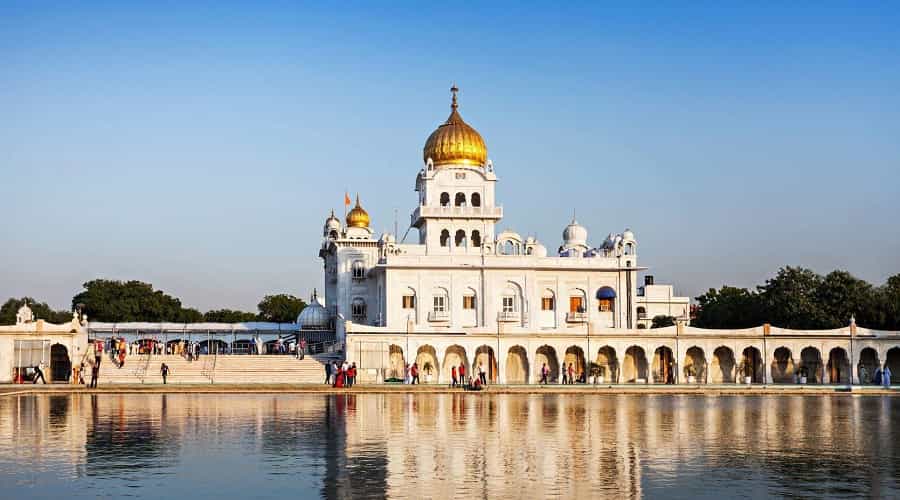
Gurudwara Mata Sundri is a historical Sikh Gurdwara located in Mata Sundri Women`s College, Mandi House New Delhi. It is dedicated to Mata Sundri, the wife of Guru Gobind Singh, the tenth Sikh Guru. The gurudwara is situated near the historic Red Fort in the Chandni Chowk area of Old Delhi. The gurudwara is believed to have been built on the site where Mata Sundri used to meditate and pray. The present building was constructed in the early 20th century and features a white marble facade and golden domes. Inside the gurudwara, there is a spacious prayer hall and a shrine dedicated to Mata Sundri.
The gurudwara is a popular destination for Sikh devotees as well as tourists who visit Delhi. It is especially significant for Sikhs who revere Mata Sundri as a saint and a source of inspiration. The gurudwara also serves as a center for social and cultural activities for the Sikh community in Delhi.
4- Gurudwara Bala Sahib
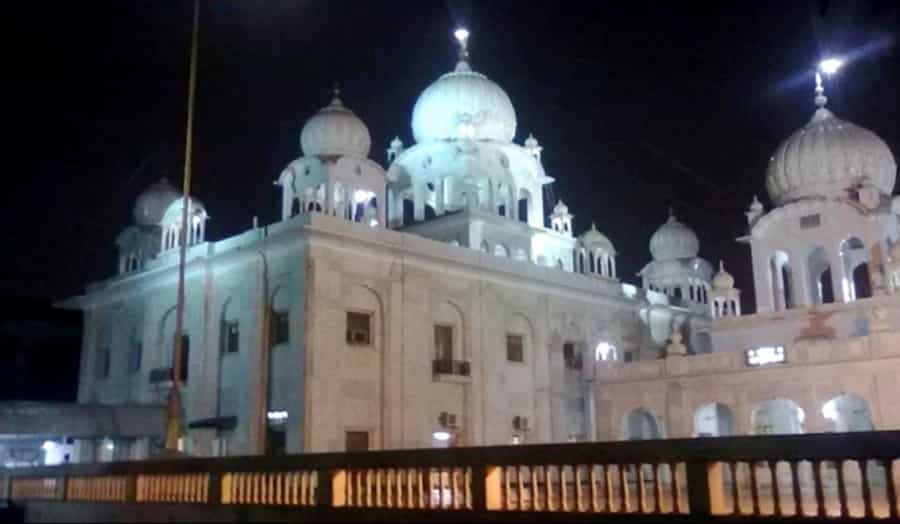
The Gurudwara Bala Sahib in Ashram is located on the banks of the river Yamuna and is a popular destination for Sikh pilgrims and visitors from all over the world. The Gurudwara was built at the site where Guru Harkrishan Sahib stayed while he was in Delhi during an epidemic in the 17th century. He helped the people of the city by distributing medicines and providing care to the sick. The Gurudwara has a beautiful white marble structure with a gold-plated dome and is surrounded by a large garden. The main hall of the Gurudwara is decorated with beautiful frescoes and intricate carvings, depicting scenes from Sikh history and culture.
One of the main attractions of the Gurudwara is the daily langar or community kitchen, which serves free food to all visitors irrespective of their caste, creed or religion. The langar is run by volunteers and is open to everyone, symbolizing the Sikh principle of equality and service to humanity.
5- Gurudwara Moti Bagh
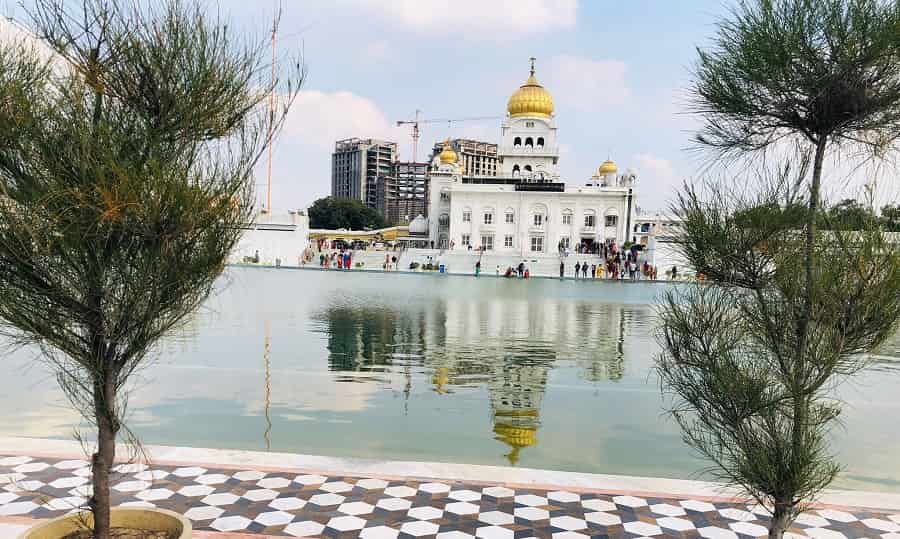
Gurudwara Moti Bagh is a Sikh place of worship located in the Moti Bagh area of Delhi, India. The Gurudwara was established to commemorate the visit of Shri Guru Gobind Sahib ji, the tenth Guru of the Sikhs, to this place in the 17th century. The Gurudwara is situated on a large plot of land and features a beautiful white marble structure with intricate carvings and a large dome on the top. The complex also includes a langar hall, where free meals are served to all visitors, and a community hall for gatherings and events.
The Gurudwara is open to people of all religions and beliefs, and visitors are expected to cover their heads and remove their shoes before entering the premises. The main prayer hall is adorned with colorful decorations and features a holy book, the Guru Granth Sahib, which is considered the spiritual guide of the Sikh community.
6- Gurdwara Rakab Ganj
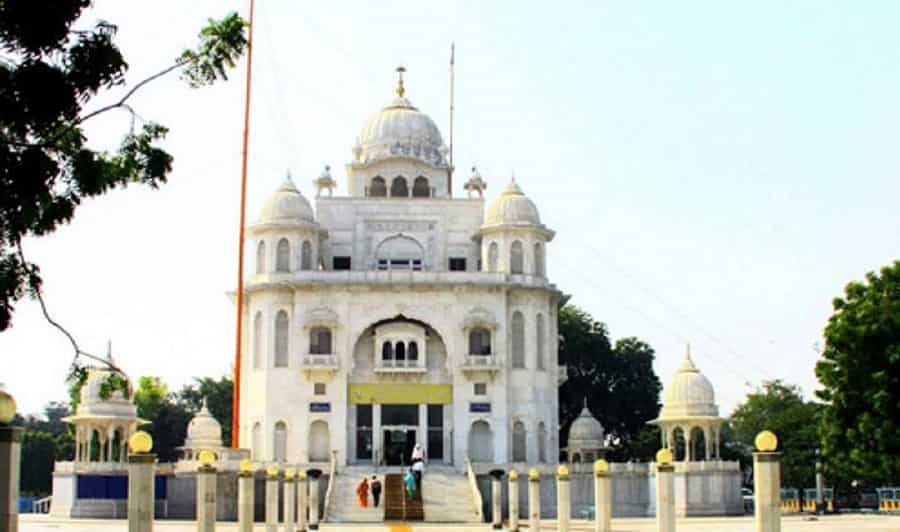
It is situated near the Parliament House and the President’s House, on the Ring Road. The gurdwara is built at the site where the ninth Sikh Guru, Guru Tegh Bahadur, was cremated after he was executed by the Mughal Emperor Aurangzeb in 1675. The gurdwara is known for its beautiful architecture, which blends modern and traditional styles. The main building is made of white marble and features a dome and a tall flagpole. The interior of the gurdwara is decorated with intricate carvings and paintings, and there is a large prayer hall where Sikh devotees can offer prayers and listen to kirtan (devotional music).
Gurdwara Rakab Ganj is also home to a Sikh Museum, which showcases the history and culture of the Sikh community. The museum displays various artifacts and relics related to the Sikh gurus and the Sikh faith. The gurdwara is open to people of all faiths and backgrounds, and visitors are welcome to participate in the various activities and services held there. It is a popular destination for both tourists and locals, who come to pay their respects to Guru Tegh Bahadur and to experience the rich Sikh culture and heritage.
7- Gurdwara Majnu ka Tilla
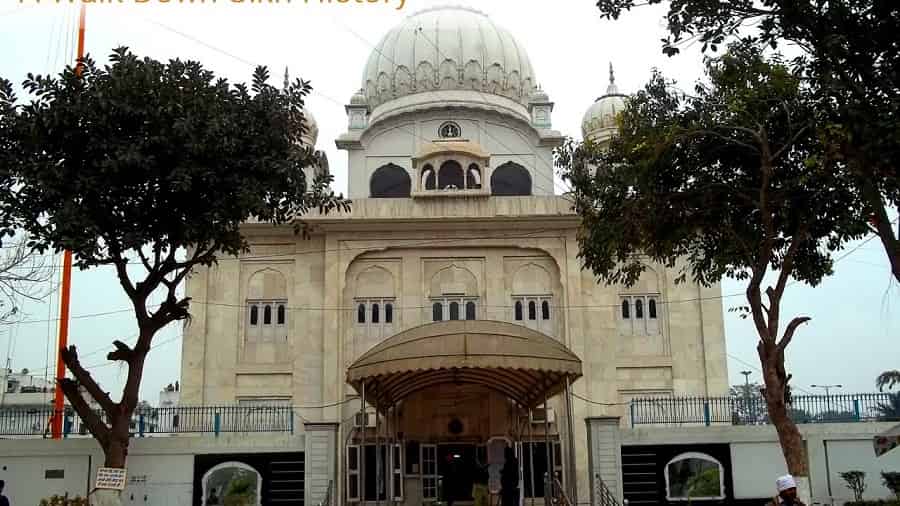
Gurdwara Majnu Ka Tilla is a historical Sikh gurdwara located in North Delhi. It is situated on the banks of the Yamuna River and is named after a Sufi saint, Abdul Qadir who was popularly known as Majnu. According to legend, Guru Nanak Dev Ji, the founder of Sikhism, met Majnu at this place during his travels and stayed here for a short period of time.
The gurdwara was established by the Sikh Guru Har Rai, the seventh guru of Sikhism, in memory of Guru Nanak Dev Ji’s visit. The gurdwara has a small pond known as “Nanak Piao,” which means “the distribution of water in the name of Guru Nanak.” Devotees believe that the water from the pond has healing properties and drinking it can cure ailments.
8- Gurdwara Nanak Piao Sahib

Gurdwara Nanak Piao Sahib is a historic Sikh temple located in the city of Delhi, India. The gurdwara is dedicated to Guru Nanak Dev, the founder of Sikhism, and is believed to have been established by him during his visit to Delhi in the early 16th century. The name “Nanak Piao” means “the refreshment of Nanak”, and the gurdwara is named after a story about Guru Nanak Dev, who used to distribute food and water to the poor and thirsty travelers who passed by the area. The gurdwara has a well, which is said to be the same well that Guru Nanak Dev used to provide water to the needy.
The current structure of Gurdwara Nanak Piao Sahib was built in the early 20th century and features a white marble façade and a large dome. The main prayer hall inside the gurdwara is adorned with beautiful paintings and frescoes depicting scenes from the life of Guru Nanak Dev.
9- Gurdwara Baba Banda Singh Bahadur

Gurdwara Baba Banda Singh Bahadur is a Sikh place of worship located in Delhi, India. It is situated in the Mehrauli area of South Delhi, near the Qutub Minar. The gurdwara is dedicated to Baba Banda Singh Bahadur, who was a Sikh military commander and disciple of Guru Gobind Singh, the tenth Sikh Guru. The gurdwara has a historical significance as it is believed to be the site where Baba Banda Singh Bahadur fought his last battle against the Mughals in 1710. He was eventually captured and executed by the Mughal Emperor Bahadur Shah I. The gurdwara is built in his memory and serves as a reminder of his bravery and sacrifice.
10- Gurdwara Damdama Sahib
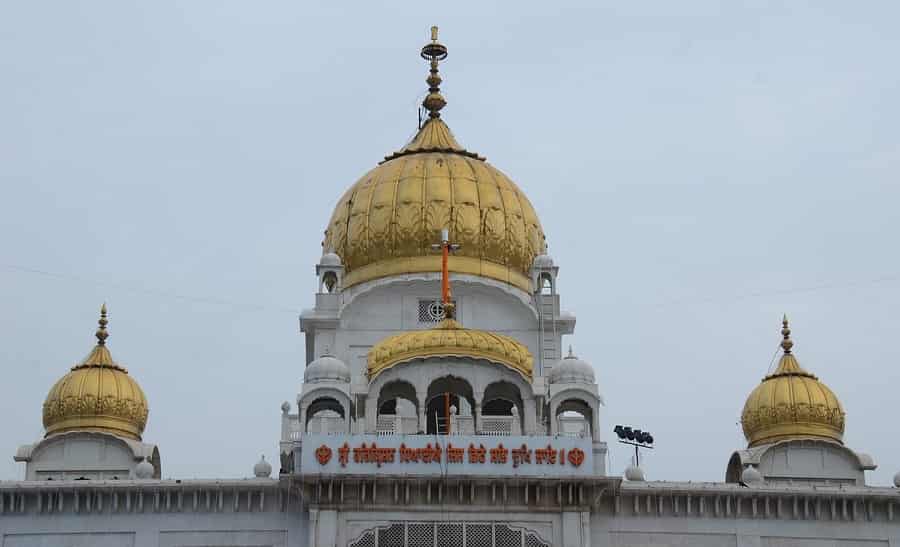
Gurdwara Damdama Sahib is a Sikh temple located in Delhi, India. It is situated in the Nizamuddin West area of the city and is one of the five Takhts, or seats of temporal authority, in Sikhism. The gurdwara was established in memory of the 10th Sikh Guru, Guru Gobind Singh, who stayed here for a brief period during his journey from Anandpur Sahib to the Deccan. The gurdwara complex includes several buildings and facilities, including a main prayer hall, a langar hall where free food is served to visitors, a library, and several rooms for the accommodation of pilgrims. The gurdwara is open to people of all religions and is a popular destination for tourists and pilgrims alike.
One of the unique features of Gurdwara Damdama Sahib is that it houses a collection of weapons and other artifacts belonging to Guru Gobind Singh, including his sword, shield, and arrows. These items are considered to be sacred relics and are displayed to the public during certain occasions.
These are just a few of the many Gurudwaras in Delhi. Each one has its own unique history and significance in the Sikh community.
- Suggested Tour: India Gurudwara Tour Packages
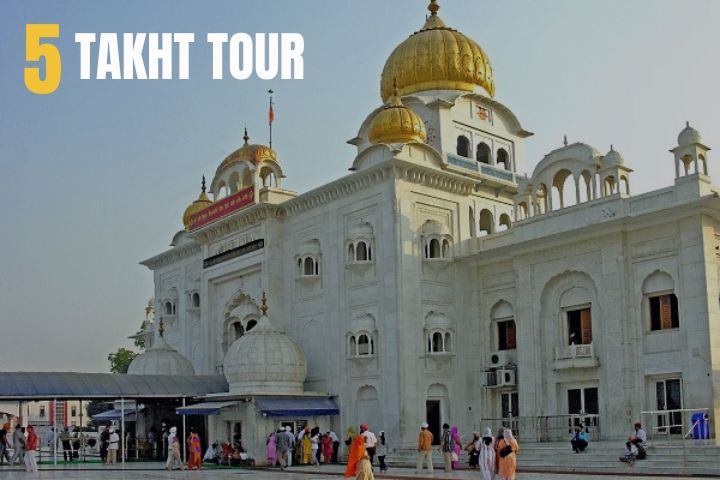

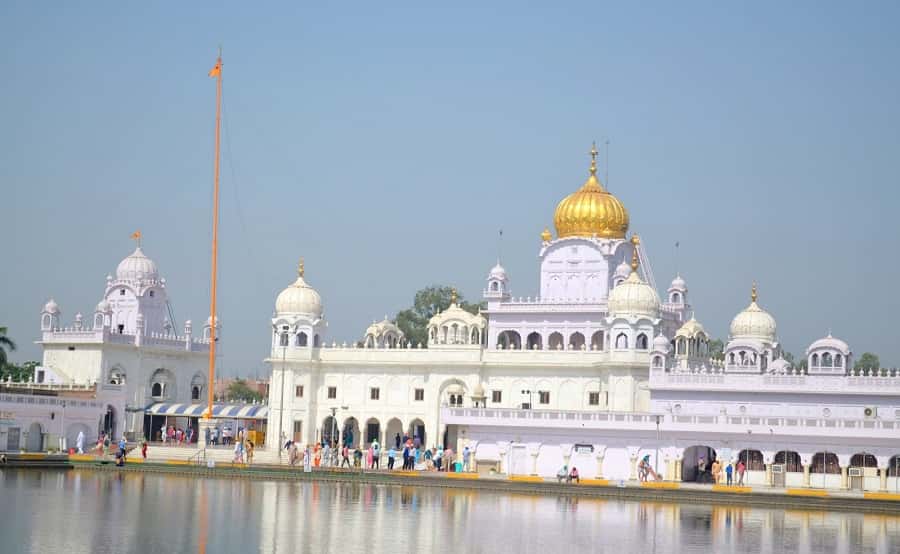
I like this! Is there anything else I should think about next? Or is this enough?